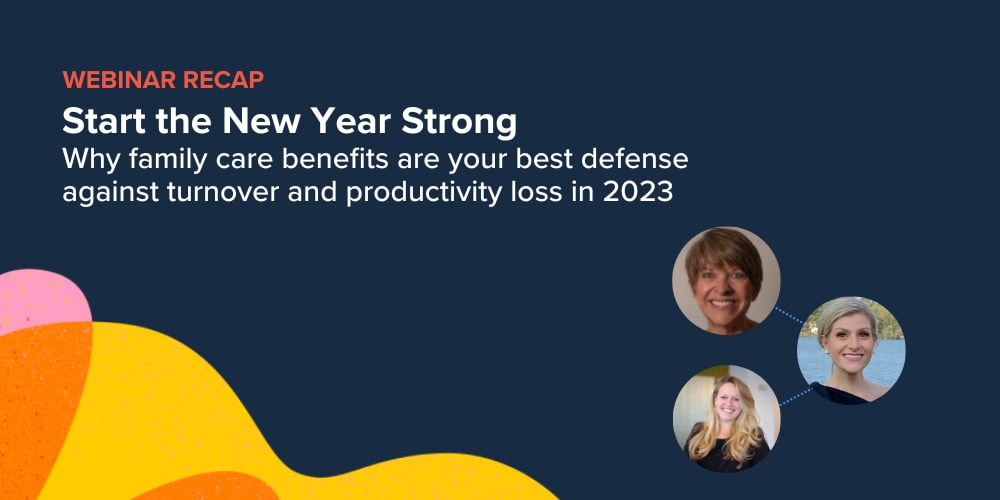As COVID-19 loosens its grip on our day-to-day lives, we’re entering a phase of redefining “normal” life. As such, more companies are asking employees to return to the office. Again.
But after more than two years of working remotely, how many employees want to return to the office?
We’ll dive into how employees really feel about returning to the office, help you create an employee survey to get direct feedback from your own workers, and provide guidance in creating your own plan for returning to the office after COVID.
Do employees want to return to the office?
Most employees don’t want to return to the office culture of 2019. But, many do see the benefits of meeting with their colleagues in person, at least some of the time. The hybrid approach is the most popular choice among employees, with 60% of workers saying they prefer this option for the following reasons:
- Building connections with coworkers. Working from home has its perks, but the isolation can be hard on some, especially for the extroverts at your company. Spending time together in person can help build bonds with colleagues, and strengthen their commitment to the company and its mission.
- Increasing collaboration. The ability to work with colleagues in person can help inspire workers, brainstorm to generate fresh ideas, and give employees a mental boost to fuel their work.
- Mentorship and skill development. Employees can benefit from time spent in a physical office—surrounded by peers, mentors, and managers—if they want to polish and grow their skill set.
On the other hand, there are some employees who may never want to return to the office, or only return on a limited basis, for various reasons, including:
- Caregiving responsibilities. Employees may have loved ones, such as children or elderly relatives, who they care for. A return to the office might force them to scramble to come up with other care solutions.
- Resuming the dreaded commute. Going to and from an office is expensive and time-consuming, and something many workers aren’t eager to return to if they can just as easily work from their home.
- Increased productivity while working from home. Employees have proved that they accomplish more when they are able to work on their terms—from home.
- Continued risk to exposure: Working caregivers with young children or immunocompromised loved ones are on high alert, and still working to mitigate risk of exposure to COVID, the flu, RSV, colds, and any other viruses that might be circulating.
The best way to understand what employees really want when it comes to a return to office life is simple—ask them.
Create a return to the office survey
While ultimately it’s your company’s decision whether to compel employees to return to the office, leading with empathy and starting a dialogue with workers first will go a long way towards building trust. Start by surveying your employees about their return to the office preferences and concerns before establishing your policy.
We recommend starting with some general demographic questions. Then, move into questions pertaining to COVID and their comfort level with working in the office again.
- What age group are you in?
- Under 25
- 26-34
- 35-44
- 45-54
- 55 or older
- How long have you been with [Company name]?
- >1 year
- 1-3 years
- 4-5 years
- 5+ years
- How confident are you in [Company’s name] ability to provide adequate safety measures related to COVID?
- Very confident
- Somewhat confident
- Neutral
- Not confident
- Not confident at all
- How comfortable are you feeling about returning to the office?
- Very comfortable
- Somewhat comfortable
- Neutral
- Not comfortable
- Not comfortable at all
- What are the reasons you might feel hesitant about returning to the office? Check all that apply.
- Concern about the risk of catching COVID
- The commute
- Less flexible schedule
- Care responsibilities
- Don’t see value of in-office work
- I am not hesitant about returning
- Other [form fill]
- What safety steps would you prefer the company take in order to feel comfortable in the office?
- Requiring all employees to wear masks
- Requiring temperature checks to enter the office
- Limiting the amount of employees in the office at any given time
- Asking all employees to maintain social distancing
- All of these
- None of these
- Other [form fill]
- How many days a week would you prefer to work in the office?
- 1-2 days a week
- 3-4 days a week
- 5 days a week
- None
Once you receive employee feedback, analyze the findings and then share the results with your employees. This will help underscore the fact that you are listening to their concerns and preferences to help shape your plan for returning to the office after covid.
Creating your return to office after COVID plan
We can’t pretend the pandemic didn’t happen. While it might be tempting to try to turn the page and return to the pre-COVID business model, it simply isn’t possible—unless you’re also prepared to lose some valuable employees who will refuse to work in an office full time.
If it’s not necessary for employees to physically be in the office, it’s not a good idea to force them back, especially if they’ve expressed that they don’t feel comfortable. A better approach is to start encouraging those employees who do feel comfortable to come in for an occasional “in-office day,” or to try working a hybrid schedule. If they have a positive experience, and tell their coworkers, it could help ease the fears of some of your more cautious employees.
Flexibility and patience when setting return to office policies will be appreciated by those employees who are more hesitant to return, and will likely lead to a bump in company loyalty as well.
As you plan your return to office, take into consideration your employees’ concerns and feedback when it comes to operating in the office post-COVID. We’ve created a free Return to the Office Checklist which provides some best practices to follow, including an overview of safety precautions, and tips on how to maximize employees’ in-office time.







